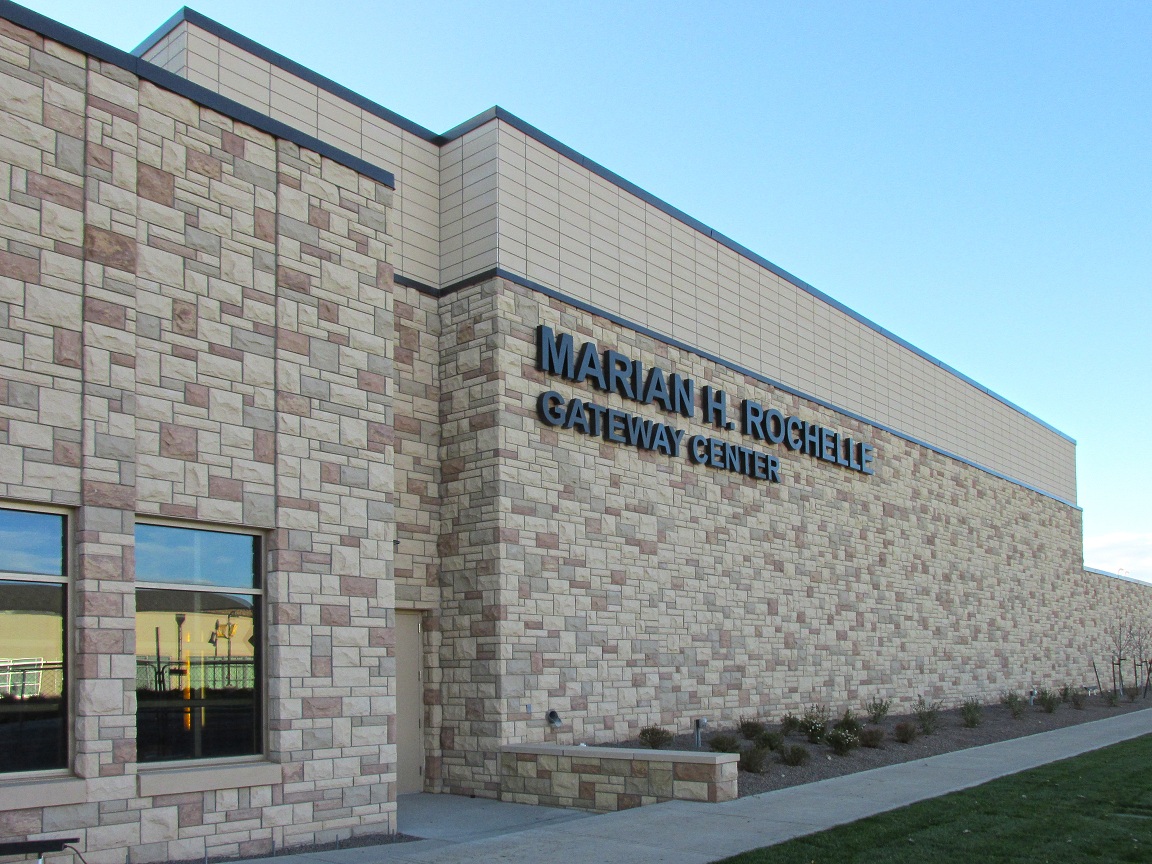With plans beginning in 2008, University of Wyoming (UW) set out to build an extraordinary welcome center (perhaps unique in the country), which embodied, in every detail, the UW brand. As the first point of contact, planners envisioned a "wow factor" that would awe everyone – from visitors, students, families, supporters, and the community alike. Completed in late 2014, the Gateway Center certainly delivers a stunning and consistent experience, from the fundamental architectural elements to the finest details woven throughout.
The state-of-the art Marian H. Rochelle Gateway Center successfully fuses the university’s time-honored brand qualities with a leading-edge technological infrastructure. Designed by Pappas & Pappas Architects and DLR Group, the center combines the traditional with the contemporary and provides a spectacularly visual venue, which incorporates welcome areas, offices, ballrooms, conference rooms, exhibits, and more.
The center gracefully blends historical elements with high-tech tools in a true melding of the traditional and contemporary. Visitors experience the region’s culture through artistic displays, including the 20-foot bronze statue of Steamboat (Wyoming’s iconic bucking horse) and a robust heritage center; at the same time, guests enjoy the dramatic three-story atrium, dynamic displays, free Wi-Fi, and a 30-screen digital wall, as well as many other interactive features.
Before these finer details took shape, the building’s exterior needed to provide the impact UW envisioned – the ‘wow factor’. As the front door of the university, two vital requirements challenged the center’s designers: incorporating the historical sandstone as the primary building element and utilizing the UW brand colors in a visual and lasting way.
From 1886 through to the early 1970s, the university utilized the same sandstone quarried locally near Laramie, which became a signature look. When the quarry closed, a new natural stone supply was difficult to source, given inventory and color limitations. Fortunately, UW discovered that Arriscraft manufactures building stone which mimics natural sandstone in appearance and performance. Since 2003, Arriscraft has supplied a custom color blend as the signature sandstone for UW buildings.
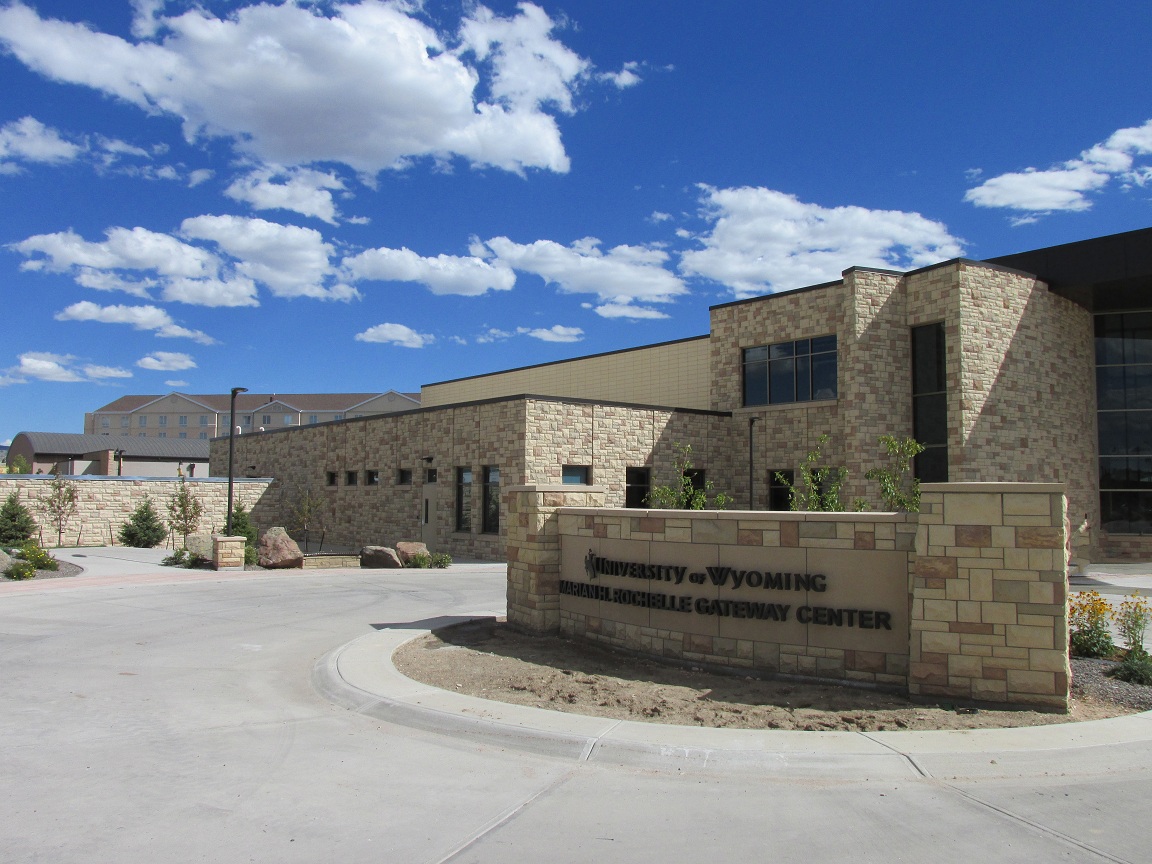 Renaissance® Masonry Units in Garnet, Suede and Café colors (rocked finish).
Renaissance® Masonry Units in Garnet, Suede and Café colors (rocked finish).
Stone supplier, BrickStone Inc. and project leader Chet Lockard (of Project Guide Services) collaborated with UW to find not only a sandstone match, but also a palette that was a perfect representation of the UW brand. According to Mr. Lockard, “Only Arriscraft could dial in the color we needed. We wanted to create more excitement for the Gateway Center and they have a great range of standard colors, which also saved money on the project. The best thing about Arriscraft is that it’s no different than quarried stone, but it’s more [color] consistent.”
Careful to continue a very similar masonry pattern as existing buildings, Toby Marlatt, VP of Marketing and Communications at UW, helped create a 4” module pattern using Renaissance® Masonry Units in Garnet, Suede and Café colors in a rocked finish. The warm tan, red and brown tones combine to both brand the building and deliver the strong statement that the university was after.
The Renaissance® stone was continued throughout the interior of the Gateway Center, to maintain the rustic feel and provide the fundamental color palette for the interior design. In the interior atrium, ARRIS.stack thin stone covers the stunning 3-storey fireplace – a highly durable and impactful choice for this key visual feature.
Architect: Pappas & Pappas Architects and DLR Group
Interior Designers: R M Ruwart Design, Pear Workplace Solutions
General Contractor: Haselden Construction
Project Manager/Client Representative: Project Guide Services
Masonry Supplier: BrickStone Inc. (CO)
ABOUT ARRISCRAFT STONE
Arriscraft’s patented Natural Process technology uses only natural materials (plus certain colored pigments) and replicates how stone is created in the earth. This unique process creates masonry units, building stone and thin stone products with the aesthetics and durability of quarried stone, but in a manufactured format for standard installation and unlimited supply.
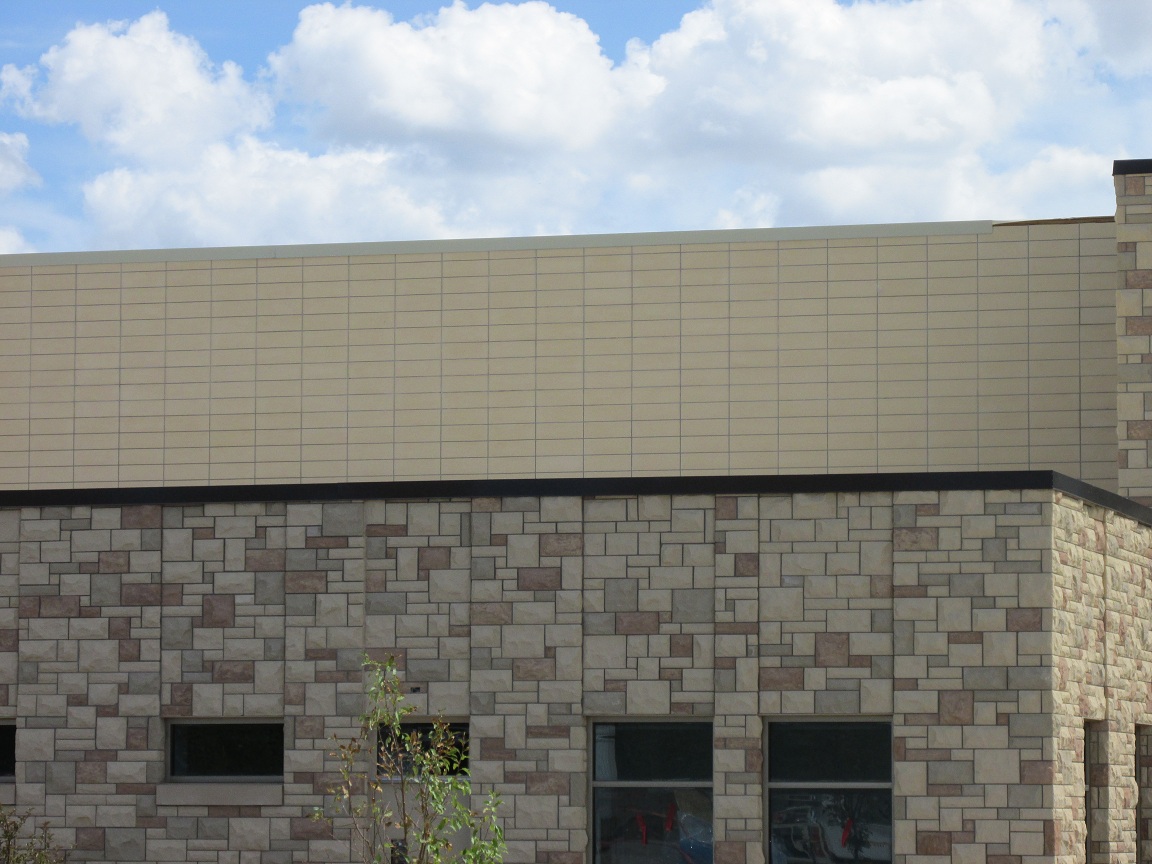 Renaissance® ARRIS.tile (thin stone) in 8” x 24” units, Suede color (smooth finish).
Renaissance® ARRIS.tile (thin stone) in 8” x 24” units, Suede color (smooth finish).
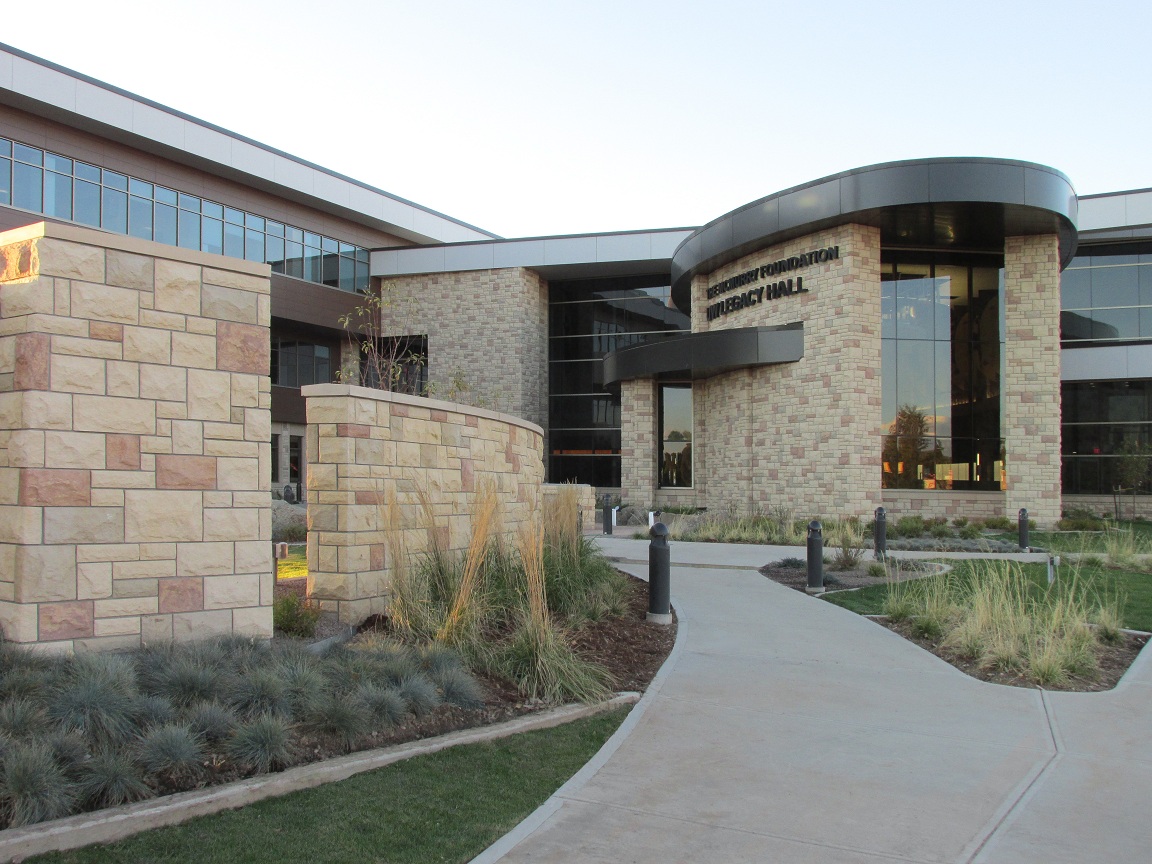 Renaissance® Masonry Units in Garnet, Suede and Café colors (rocked finish).
Renaissance® Masonry Units in Garnet, Suede and Café colors (rocked finish).
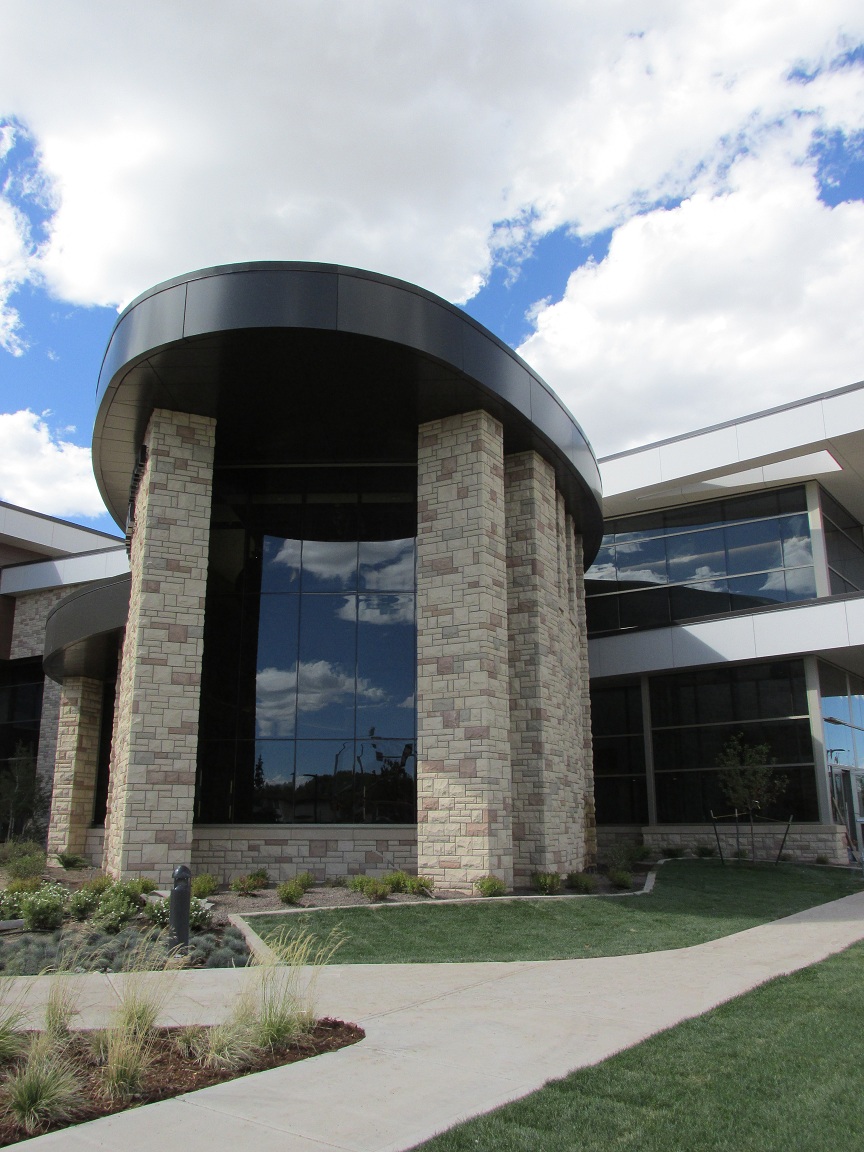 Renaissance® Masonry Units in Garnet, Suede and Café colors (rocked finish).
Renaissance® Masonry Units in Garnet, Suede and Café colors (rocked finish).
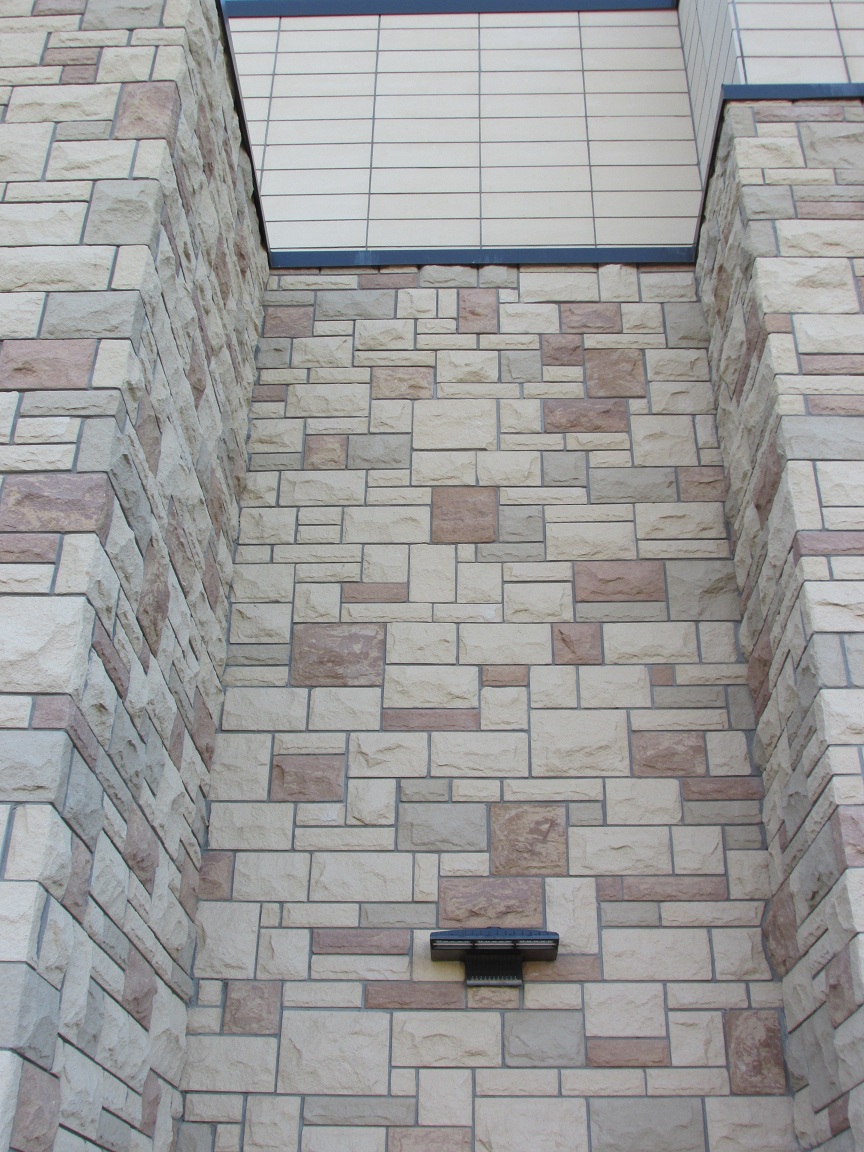
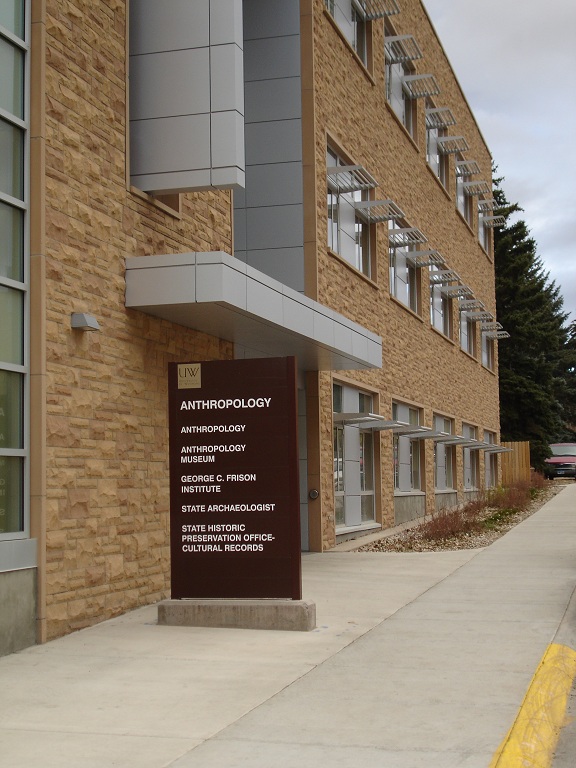 Custom color blend of Renaissance® Masonry Units on existing UW building. This image illustrates the "sandstone" match and custom blend developed for UW which has been the new standard stone since 2003.
Custom color blend of Renaissance® Masonry Units on existing UW building. This image illustrates the "sandstone" match and custom blend developed for UW which has been the new standard stone since 2003.
Related Stories
University Buildings | Jun 14, 2023
Calif. State University’s new ‘library-plus’ building bridges upper and lower campuses
A three-story “library-plus” building at California State University, East Bay (CSUEB) that ties together the upper and lower campuses was recently completed. The 100,977-sf facility, known as the Collaborative Opportunities for Research & Engagement (“CORE”) Building, is one of the busiest libraries in the CSU system. The previous library served 1.2 million visitors annually.
Higher Education | Jun 14, 2023
Designing higher education facilities without knowing the end users
A team of architects with Page offers five important factors to consider when designing spaces for multiple—and potentially changing—stakeholders.
University Buildings | Jun 9, 2023
Cornell’s new information science building will foster dynamic exchange of ideas and quiet, focused research
Construction recently began on Cornell University’s new 135,000-sf building for the Cornell Ann S. Bowers College of Computing and Information Science (Cornell Bowers CIS). The structure will bring together the departments of Computer Science, Information Science, and Statistics and Data Science for the first time in one complex.
Student Housing | Jun 5, 2023
The power of student engagement: How on-campus student housing can increase enrollment
Studies have confirmed that students are more likely to graduate when they live on campus, particularly when the on-campus experience encourages student learning and engagement, writes Design Collaborative's Nathan Woods, AIA.
Sports and Recreational Facilities | May 30, 2023
How design supports a more holistic approach to training
For today’s college athletes, training is no longer about cramming team practices and weight lifting sessions in between classes.
Higher Education | May 24, 2023
Designing spaces that promote enrollment
Alyson Mandeville, Higher Education Practice Leader, argues that colleges and universities need to shift their business model—with the help of designers.
University Buildings | May 17, 2023
New UC Irvine health sciences building supports aim to become national model for integrative health
The new College of Health Sciences Building and Nursing & Health Sciences Hall at the University of California Irvine supports the institution’s goal of becoming a national model for integrative health. The new 211,660-sf facility houses nursing, medical doctorate, pharmacy, philosophy, and public health programs in a single building.
University Buildings | May 11, 2023
New ‘bold and twisting’ building consolidates School of Continuing Studies at York University
The design of a new building that consolidates York University’s School of Continuing Studies into one location is a new architectural landmark at the Toronto school’s Keele Campus. “The design is emblematic of the school’s identity and culture, which is centered around accelerated professional growth in the face of a continuously evolving labor market,” according to a news release from Perkins&Will.
Digital Twin | May 8, 2023
What AEC professionals should know about digital twins
A growing number of AEC firms and building owners are finding value in implementing digital twins to unify design, construction, and operational data.
BIM and Information Technology | May 8, 2023
3 ways computational tools empower better decision-making
NBBJ explores three opportunities for the use of computational tools in urban planning projects.


